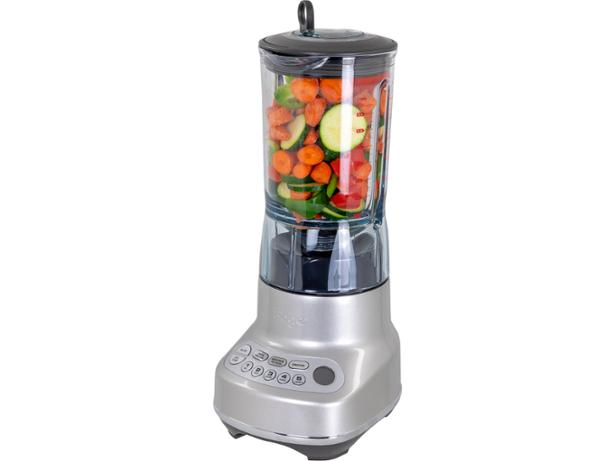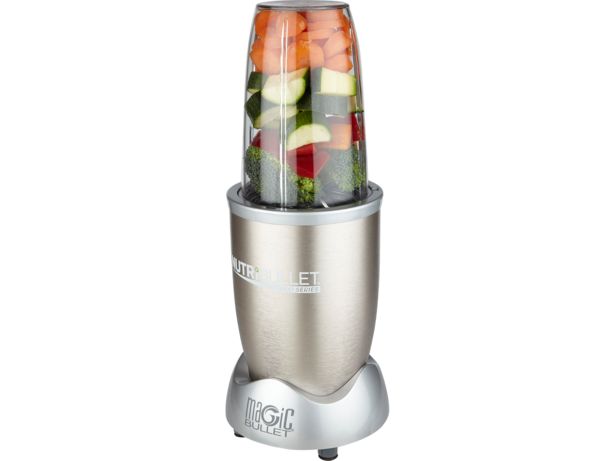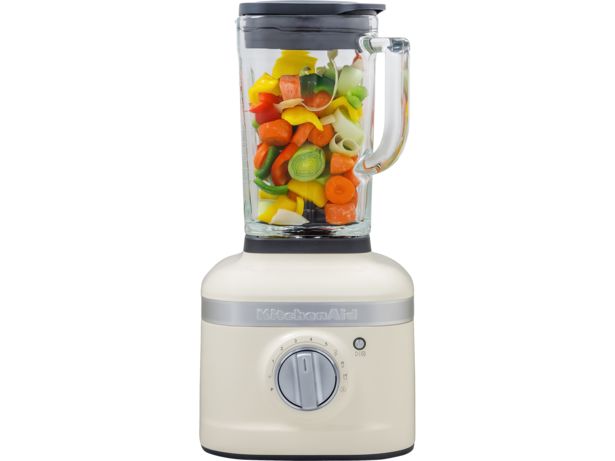How we test blenders

Every year, we put a wide range of blenders to the test, using popular and tricky-to-blend foods. From making great soups and smoothies to tackling tough tasks such as making pesto and crushing ice, our tests help Which? members spend their money wisely.
Unlike free-to-access websites that tend to get the appliances they review free of charge from manufacturers or their PR representatives, we buy all the appliances we test ourselves, so you can have complete trust in our verdict.
Our Which? score is calculated purely on the measurements and ratings we generate in our lab, meaning there's no room for bias when giving an overall rating.
See our round-up of the best blenders to help you choose a model to suit you.
Video: what makes a Best Buy jug blender?
Watch this video to discover more about our methodical testing and why our blender tests are different.
What are Which? Best Buy, Don't Buy and Great Value blenders?

A quick guide to the recommendations you'll see on our blender reviews.
Best Buy blenders
Best Buys are given to blenders that impress the most in our tests. Blenders that score 83% or more are Best Buys and come with a firm overall recommendation, although you should still read our reviews to check for any weaknesses that might impact your buying decision.
Best Buy blenders typically excel where it really matters. They effortlessly blend soft and tough ingredients, they’re easy to use, quick and not too noisy.
Don't Buy blenders
Blenders that score 45% or below are Don’t Buys to avoid.
Don't Buy blenders disappoint in crucial areas. They might struggle with tough ingredients, aren’t easy to use or clean or are louder than most.
Great Value blenders
How much buyers are willing to spend on a blender varies and that’s where our Great Value recommendation comes in. These models do pretty well in our tests – scoring 60% or more – while also being at least 20% cheaper than the average price of the blenders we’ve tested.
Great Value models are the ones to go for if you’re looking for a bargain. Some Great Value blenders also score well enough to be Best Buys.
How is the Which? score calculated?
The Which? overall score is a percentage. This score only takes into account the results of our tests and ignores price completely.
This means that all blenders are tested on exactly the same scale, so you can compare any model at any price and know how it measures up against its rivals in key areas. All blenders are tested in the same way, regardless of the manufacturer's claims.
Weightings and star ratings
We combine all the scores from the tests listed below to come up with an overall rating for each blender.
We only award Best Buy status to blenders that blend well and are a breeze to use and clean.
The most important test results have a greater impact on the overall score:
- Performance - 55%
- Ease of use and cleaning - 40%
- Time to blend - 5%
Our testing criteria
Below are the key blender testing categories and how we evaluate each one.
Performance
Key question: Can the blender make decent soup and smoothies?
You'd hope that every blender can do what it says and blend food. But that's not always the case, so our unique blending tests check to make sure there are no lingering lumps. We make three types of smoothie with each blender, and our smoothie recipes include ingredients such as frozen and fresh fruit, ginger, leafy greens, nuts, dairy and ice.
For soup, we cook up a classic vegetable soup of carrot and coriander, but with some added celery to make it a little more difficult. We then wait for the cooked mixture to cool before blending it, as most blenders warn against blending hot food in them. After blending the cooled soup, we strain it through a fine mesh sieve and inspect to see what's escaped unblended, so that you don't end up with, for example, stringy celery in your soup. A Best Buy blender will whizz everything to a smooth, even consistency.
Key question: What's it like with tougher ingredients, such as veg and nuts?
Not all blenders do a good job of blending tough, dry or fibrous ingredients such as herbs, nuts, seeds and raw veg. Our fruit and veg smoothie challenges blenders with frozen berries, whole almonds, leafy spinach and fibrous ginger to see if they can blitz complex mixes into tasty drinks.
To really sort the versatile blenders from the one-trick ponies, we challenge each blender to make pesto: combining garlic, basil, pine nuts, cheese and olive oil to make a smooth paste. We see significant differences between blenders in this test - some manage fine with more liquid smoothie mixtures, but struggle to blend drier ingredients.

Key question: Can it crush ice?
Crushing ice in a consistent way is a task many blenders struggle with, and we got really good results from only a handful of blenders. A good blender, whether a jug blender or mini blender, will transform the cubes into even, fine crystals while poor blenders may leave you with large, uneven chunks or an over-processed mush.
Blenders are generally better at processing ice as part of a liquid mix - such as a smoothie - rather than on its own. If you're keen on making crushed ice, make sure you check our blender reviews to find the best ice-crushing blenders.
Key question: How noisy is it?
Blenders are generally quite noisy, but some are positively ear-splitting - annoying if you want to make an early-morning smoothie without waking up the household, even if they are usually only on for less than a minute.
We rate how loud each blender is, providing a comparative rating and highlighting any that make exceptionally annoying or unpleasant noises.
Performance makes up 55% of a blender's score.

Ease of use and cleaning
Key question: Is the blender easy to use and clean?
A blender might make lovely lump-free smoothies, but if it's a pain to use and clean, it's only a matter of time before it gets relegated to a cupboard to gather dust.
That's why we don't just focus on blending ability. We also check how easy each blender is to set up, use and clean afterwards. Some are intuitive, while others will have you scratching your head and consulting the manual.
Our tests reveal which blenders will leave you spending ages cleaning out nooks and crannies, and those that are a doddle to clean or can be popped straight into the dishwasher.
Ease of use and cleaning makes up 40% of a blender's score.
Time to blend
Key question: Is it quick to blend?
Some blenders reduce your fruit and veg to pulp in a matter of seconds, while others will leave you hanging around, poking the mix with a spoon and trying in vain to get the lumps out.
We don't just rate the end result to ensure you get a lump-free smoothie, we also time how long it takes to get there so you can get a perfectly blended mix in the quickest time possible.
Blending time makes up 5% of a blender's score.
Pick the perfect blender with Which?
We've tested both the larger jug-style blenders and personal or mini blenders head-to-head as, whatever type of blender you have, you'll still want it to blend quickly and smoothly.
Our tests reveal which blenders can turn the rough into the smooth, and our in-depth reviews will help you to find a model that'll suit your blending needs.
We've tested blenders from popular brands including Kenwood, Morphy Richards, Nutri Ninja, Sage and Nutribullet, so you're sure to find a blender to suit your needs.
Discover which models blitzed their way to success in our tests by heading to our blender reviews.


